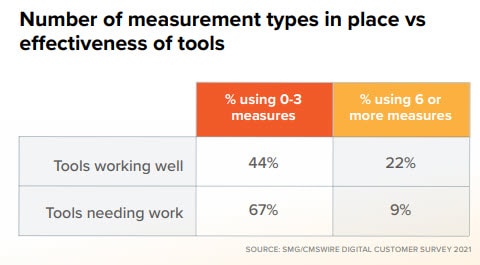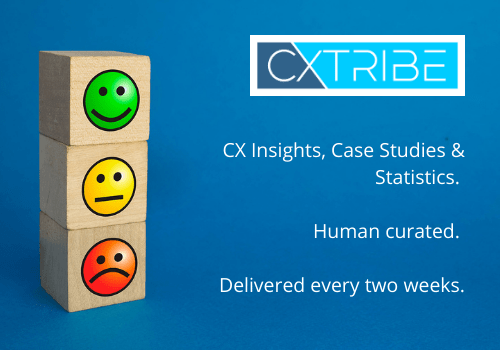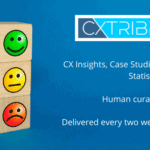CX Tribe is the best Customer Experience insights, case studies and statistics. Human curated. Delivered weekly. Join more than 5,000 other CX Professionals and subscribe.
“Success is the sum of small efforts – repeated day in and day out.” — Robert Collier, author
Herewith another small effort to, hopefully, help you succeed.
[Best Practice]
[Really] Listening to your Customers
Static survey data is almost never enough to understand customer issues – at some point you will need to talk to real, live, customers.
Scary, I know.
Your static survey content helps identify potential issue areas but often it’s only deeper discussion with customers that uncovers what actually needs to be done.
When you do chat with live customers, try to turn off your natural problem solving instincts and really listen for the underlying need or cause. If you don’t, you’re likely to spend (waste) effort in areas that don’t help your customers.
Vince Dawkins gave a great example of why this is important in a recent post:
…I spoke with a customer who had trouble understanding some of our reporting options. It would have been easiest to stop them to explain the report, but the more I listened, the more I realized the issue wasn’t with the reporting but with managing the reporting (such as generating the correct reports)…
[Best Practice]
Internal Service Level Agreements
Benedict Clark has written a good background piece on internal SLAs – how to set them up and what they should include.
It’s a good article, but the bigger question is of course: why have them at all?
What’s the point of having an internal, unenforceable agreement with no financial consequences?
Communication, surfacing assumptions and clarifying expectations is the point.
In the process of creating an internal SLA you will drill into the expectations and hidden assumptions of each group. You will also learn a lot more about what they do day to day.
Better, more clear understanding makes for better teamwork.
At the end of the day the SLA is almost not needed – it’s the learning along the way that is the important outcome.
[Research]
The State of Digital Customer Experience – 2021 [Download Link]
This report from CMS Wire is worth the download and read.
It covers a few interesting topics but the one I’ll call out is the CX measurement types used by companies and how they use them.
In terms of customer feedback metrics, it’s the usual crowd with 36% of companies using CSAT, 32% using NPS and 10% using CES.
They also looked at the number of measurements companies track.
44% of companies using just 0-3 metrics feel they are working well whereas only 22% of companies using six or more metrics can say the same.

It’s not surprising to me that more measurement is not synonymous with better measurement. Having the right measurements is what’s important.
I typically advise clients to use NPS but if they don’t like that to use CSAT OR CES but NOT all three.
Three metrics for, basically, the same business variable (loyalty) doesn’t create clarity, it creates confusion and distraction. When they don’t align you spend more time talking about why they are different than how to improve them.

